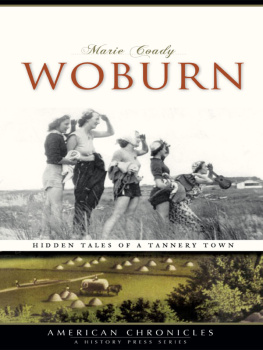Published by The History Press
Charleston, SC
www.historypress.com
Copyright 2021 by Jack Whitehouse
All rights reserved
Front cover: A brigantine lurking just off shore. Bigstock Metro_Man.
First published 2021
E-Book year 2021
ISBN 978.1.4396.7381.2
Library of Congress Control Number: 2021943432
Print Edition ISBN 978.1.4671.4961.7
Notice: The information in this book is true and complete to the best of our knowledge. It is offered without guarantee on the part of the author or The History Press. The author and The History Press disclaim all liability in connection with the use of this book.
All rights reserved. No part of this book may be reproduced or transmitted in any form whatsoever without prior written permission from the publisher except in the case of brief quotations embodied in critical articles and reviews.
For Elaine, my wife; my son, John, and his wife, Etsu; and my two grandsons, Jack and Teddy.
ACKNOWLEDGEMENTS
First and foremost, a huge thank-you goes to my wife, Elaine Kiesling, for her editorial expertise, her patience and her interest in making my drafts into stories worth reading. Were it not for Elaines writing skills and her ability to patiently help develop mine, my books would not have been published.
I would like to say thank you to Judge Peter Fox Cohalan, who has served as Islip Town supervisor, Suffolk County executive and state Supreme Court judge. Judge Cohalan, who now serves as the Suffolk County historian, has done more than anyone else to preserve Islip Town history. His personal efforts and initiatives made possible the preservation of the Jacob Ockers House as well as the twelve-acre Islip Grange, home to structures from Islip Towns eighteenth-century past.
Thank you to longtime Suffolk County Historical Society librarian Edward (Ned) H.L. Smith III. No one I have ever met could match Neds knowledge of Long Island history. If Ned did not know the answer off the top of his heada rare occurrencehe knew where to find the answer in the societys extensive collection of research works.
Thanks to all the volunteers and employees at the Long Island Maritime Museum for allowing me to go through their files on oysterman Jacob Ockers and related materials. The Maritime Museums dedicated volunteers are a wonderful example of the importance of pro bono work. With their preservation of our nautical heritage they enrich all our lives. Anyone who has worked as a volunteer knows what it takes to work for free; the very least such work should command is a great thanks from all of those who profit from it.
Writing a history book requires a great deal of research and therefore the assistance of those who work in our libraries, art museums, state and national parks, churches and historical societies. Senior people from institutions as grand as the Metropolitan Museum of Art to the unpaid keepers of the files in our local historical societies are all inevitably eager to provide what materials and expertise they can. It is impossible to give individual credit to everyone, but I would like to single out a few.
Special thanks to those at the Sayville Historical Society, the Sayville Library and the Friends of the Connetquot River State Park Preserve.
Thank you to Ency Benjamin Griek Baxter for providing detailed information on her familys proud history in the Southampton, Oakdale and West Sayville areas. Ive known her and her brothers, Jack and Bill, as good friends since the 1950s.
My personal thanks to Mark DeAngelis, owner of the West Sayville Boat Basin and recognized local history expert, for allowing me to use several of his unique photos of Oyster King Jacob Ockers.
My thanks to Diana Edkins of Art Resource for promptly and efficiently guiding me through the process of acquiring a copy of the Metropolitan Museum of Arts In Strange Seas by George Willoughby Maynard.
This is my third book with History Press; Ive never failed to be impressed with the professionalism of all the companys editors, designers and staff with whom Ive come in contact. My special thanks to J. Banks Smither, acquisitions editor at The History Press, for his professional guidance, quick responses and constructive advice from the start of this project.
Former Islip Town councilman and lifelong friend Chris Bodkin, who has done so much to serve the Islip Town community, inspired me to complete this book.
Special thank-you to Rhianna Murphy, director of finance and administration at Grace Episcopal Church in New York City, for her responsiveness in providing photos and information on Titanic heroine Edith Corse Evans.
My appreciation to parish administrators Terry Freas and Nancy Koinoglu at St. Anns Church in Sayville for their assistance in providing a photo of the Edith Corse Evans plaque inside the church.
Thank you to Administrator Rodney Dudley at the Sayville Historical Society for her prompt assistance in providing copies of the societys photographs.
I would also like to mention St. Anns Cottages alumna Mickey Walker for her inspiring personal notes following the publication of Sayville Orphan Heroes: The Cottages of St. Anns. Mickey recently passed away, and she is missed.
I must again say thank you to the founder of the Fire Island Tide newspaper, Warren C. McDowell. Warren is the person who years ago first encouraged my wife, Elaine, and me to write about the history of Fire Island and the Great South Bay. He recognized Elaines talents, and she rewarded him by serving as the best editor the paper ever had. Without Warrens early encouragement, this book probably would not have come about.
PREFACE
I am extremely interested in current events; my wife calls me a news junkie. I suppose this intense interest in todays news is an extension of my curiosity about history. From childhood, I wondered how and why certain things occurred and what would happen next.
As I grew older, my interest in history deepened. I felt an intense desire to understand the events of the past in order to learn how they shaped our present, hoping that historys lessons would guide decision-makers who influence our future. This desire was a motivating force that inspired all my books. But I mostly wanted to tell a good story that happened to be true.
This book had its beginnings in my repeated explorations of fabled Islip Town locations, such as the Jacob Ockers House, the Cottages of St. Anns, the Southside Sportsmens Club, the Captree Island hotel, a Fire Island camp for boys with handicaps and Tammany Halls Fishing Club, among others. While the geographical locations are still identifiable, the reasons for their existence have mostly disappeared. Yet in those places significant and profound events happened.
No matter how beautiful, grand or imposing a building or site is, it is only as important as the people who lived there or were associated with it. Yet places that are steeped in history can take on a life if not a personality of their own. You can sense it when you enter the premises. Is it a happy place? A place of tragedy? A haunted place? You get a whiff of what happened there, whether good or evil. I wanted to capture that feeling.














